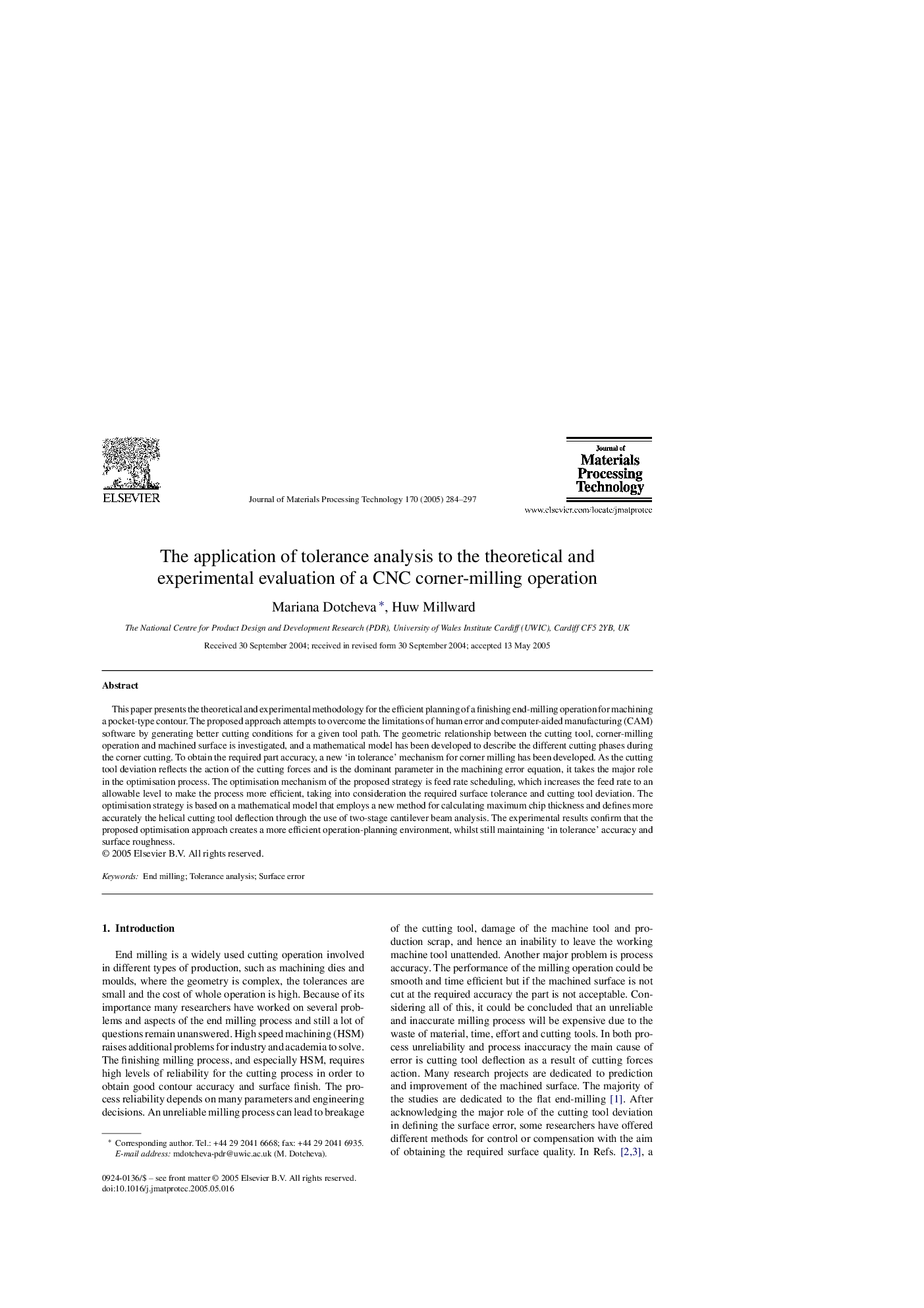| Article ID | Journal | Published Year | Pages | File Type |
|---|---|---|---|---|
| 9708854 | Journal of Materials Processing Technology | 2005 | 14 Pages |
Abstract
This paper presents the theoretical and experimental methodology for the efficient planning of a finishing end-milling operation for machining a pocket-type contour. The proposed approach attempts to overcome the limitations of human error and computer-aided manufacturing (CAM) software by generating better cutting conditions for a given tool path. The geometric relationship between the cutting tool, corner-milling operation and machined surface is investigated, and a mathematical model has been developed to describe the different cutting phases during the corner cutting. To obtain the required part accuracy, a new 'in tolerance' mechanism for corner milling has been developed. As the cutting tool deviation reflects the action of the cutting forces and is the dominant parameter in the machining error equation, it takes the major role in the optimisation process. The optimisation mechanism of the proposed strategy is feed rate scheduling, which increases the feed rate to an allowable level to make the process more efficient, taking into consideration the required surface tolerance and cutting tool deviation. The optimisation strategy is based on a mathematical model that employs a new method for calculating maximum chip thickness and defines more accurately the helical cutting tool deflection through the use of two-stage cantilever beam analysis. The experimental results confirm that the proposed optimisation approach creates a more efficient operation-planning environment, whilst still maintaining 'in tolerance' accuracy and surface roughness.
Related Topics
Physical Sciences and Engineering
Engineering
Industrial and Manufacturing Engineering
Authors
Mariana Dotcheva, Huw Millward,
